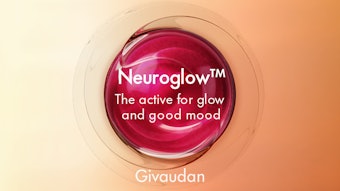BASF Beauty Creations, the cosmetic active ingredient business of BASF, has introduced a new sphere active that reduces the appearance of fine lines and wrinkles, this time with konjac root powder. The company has launched Ultra Filling Spheres (INCI name: Ethylhexyl Palmitate (and) Trihydroxystearin (and) Sodium Hyaluronate (and) Amorphophallus Konjac Root Powder), which more effectively reduces the appearance of fine lines and wrinkles than the company's Filling Spheres due to an improved ability to absorb water.
The underlying system is based on the ability of cross-linked and dehydrated spheres to penetrate the upper layers of the epidermis and to absorb the water that evaporates from the deep dermis. The spheres are comprised of two biopolymers: hyaluronic acid of low molecular weight (<40 kDa) and konjac, a polysaccharide of high molecular weight (> 200 kDa) with superior hygroscopic properties. Cross-linking of both components forms small spheres which after drying, are transformed into the active spheres. Their high hygroscopic properties allows the spheres to rapidly increase in volume in the presence of the skin’s water reserve, plumping the skin to help reduce the appearance of wrinkles and fine lines.
Their unique composition of low molecular weight hyaluronic acid and konjac glucomannan give the active spheres greater capacity to absorb water and swell than the previous versions of Filling Spheres. This is due to higher hygroscopic properties of konjac.
Ex vivo tests have demonstrated increased performances in comparison with the former generation. The new spheres are able to absorb 24 times more in weight and 17 times more in volume. In addition, they were shown to exhibit a water retention capability 20% higher (in tubo gravimetric determination) as well as an enhanced thickness of the stratum corneum by 17% (ex vivo measurement).
The spheres are recommended at 0.5–3.0% in formulations. They should be predispersed in the oily phase of the emulsion before creating the emulsion. The spheres should not be used with aqueous gel or emulsions in oily phase at less than 20%.










